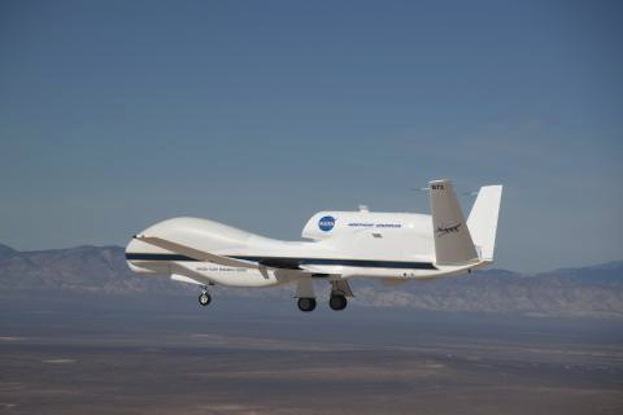Back from the Dead: Drones Studying 'Zombie' Storm

It's aliiiiiiiive! NASA drones flew over Tropical Storm Humberto yesterday (Sept. 16) to study how this "zombie" storm whirled back to life after dissipating over the Atlantic Ocean over the weekend.
A pair of unmanned Global Hawk aircraft took to the eastern Atlantic skies to peer inside Humberto's mass of clouds and gather data on the storm's environment. The observations will help scientists better understand the storm's life cycle, including the conditions that enabled Humberto to regain strength.
Last week, Humberto became the first hurricane of the 2013 season, with maximum sustained winds of 75 mph (120 km/h), and almost set a new record for the latest-forming first hurricane in the modern record.
By Sunday (Sept. 15), the remnants of Humberto weakened into a low-pressure area as it passed through a region with strong wind shear, which is caused by differences in atmospheric pressure between neighboring areas. Wind shear typically halts a storm from intensifying by separating its warm core from the surrounding system of circulation. [Image Gallery: Hurricane Season 2013]
But the next day, the wind shear eased up, and Humberto mustered strength and swirled back into a tropical storm. Satellite images confirmed the storm had been reborn, with maximum sustained winds near 40 mph (64 km/h). The storm is expected to simmer over the next couple of days as it moves northwestward in the Atlantic Ocean, according to predictions from the National Hurricane Center.
Humberto is the second "zombie" storm of the season: In early September, Tropical Storm Gabrielle broke up and then regained strength over the western Atlantic Ocean.
NASA's Global Hawks are designed to help researchers observe storms as they develop. The drones can fly continuously for up to 30 hours, and are built to reach altitudes higher than 60,000 feet (18,300 meters), enabling them to fly above tropical storms and hurricanes.
Sign up for the Live Science daily newsletter now
Get the world’s most fascinating discoveries delivered straight to your inbox.
Microwave and radar instruments housed along the plane's underbelly and inside the nose cone gather data on the structure of the storm and the processes happening within it.
NASA's Hurricane and Severe Storm Sentinel (HS3) mission is investigating the factors that lead to hurricane formation and intensification in the Atlantic Ocean. The mission, which will operate until Sept. 23, is also investigating the role of the Saharan Air Layer, a hot, dry and dusty mass of air that may contribute to or inhibit the development of tropical storms.
Follow Denise Chow on Twitter @denisechow. Follow LiveScience @livescience, Facebook & Google+. Original article on LiveScience.

Denise Chow was the assistant managing editor at Live Science before moving to NBC News as a science reporter, where she focuses on general science and climate change. Before joining the Live Science team in 2013, she spent two years as a staff writer for Space.com, writing about rocket launches and covering NASA's final three space shuttle missions. A Canadian transplant, Denise has a bachelor's degree from the University of Toronto, and a master's degree in journalism from New York University.









